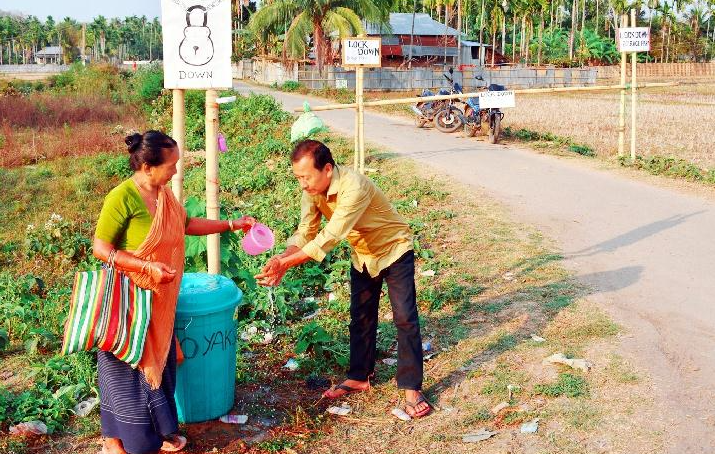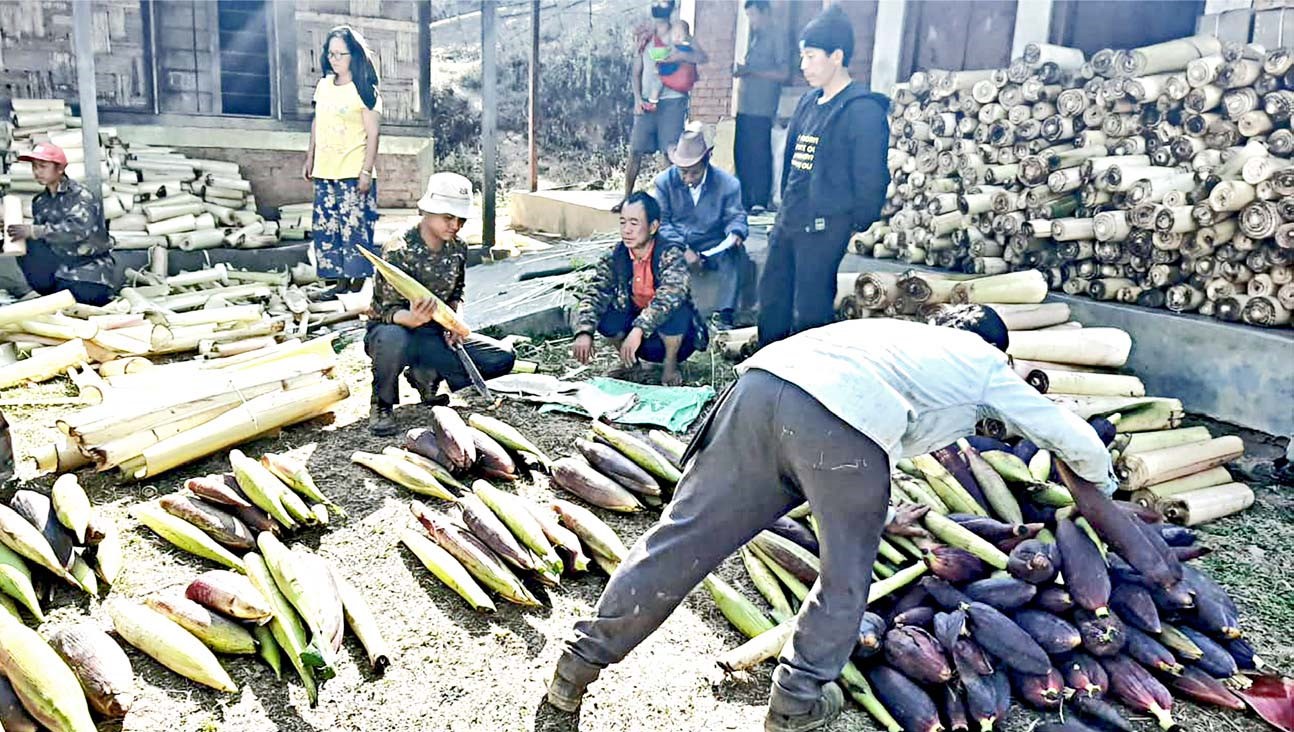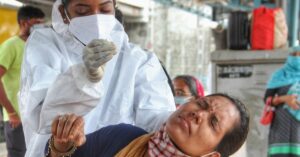Lockdown Lessons: 4 Reasons Why India’s North-east is Winning the Fight Against COVID-19
With only about 0.26 per cent of the reported COVID-19 positive cases across the country so far, communities in the North-east have demonstrated a critical role in arresting the pandemic. Here's how.

With The Positive Collective, The Better India’s COVID-19 coverage is available to regional language publications for free. Write to [email protected] for more details.
The total population of North-east India is 46 million, which is about four per cent of the national population. With only about 0.26 per cent of the reported COVID-19 positive cases across the country so far, the region seems to have done well in containing the spread of the virus.
This statistic especially stands out in the light of several reported cases of racial discrimination towards its people, who are being targeted as suspected carriers of the virus in many Indian cities.
The reasons for the lower numbers of reported cases can be attributed to a few factors:
1. Customary laws
All eight states in the region are a confluence of groups, with as many as 220 different ethnicities. Except for the valleys of the Brahmaputra, the Barak, the Howrah, and the Imphal, all other places are predominantly inhabited by tribal people, with a fair degree of diversity and autonomy even within these groups.
In rural areas, each village is inhabited by one tribe, and they follow the laws of the community. As a regular practice, for a Chakhesang tribal to enter into an Angami tribe village, they have to take permission from the headman of the Angami village. This system of self-regulated isolation has helped impose physical distancing norms effectively in the vast rural areas of the North-east during this crisis.
2. Poor healthcare system

The healthcare system in the North-east is relatively weak. There are a total of 476 medical colleges across India; this figure is only 11 for the entire north-east region, as per the National Health Profile Report 2018.
While Mizoram and Arunachal Pradesh got their first-ever medical college in the last two years, Nagaland still does not have a single medical college. The poor medical infrastructure of the region is also reflected in the low number of COVID-19 testing centres. There are only 11 testing centres—six in Assam (including one of the Indian Council of Medical Research’s (ICMR’s) Regional Medical Research Centre at Lahowal, Dibrugarh district); one in Meghalaya; one in Tripura; and two in Manipur.
Mizoram added a centre for COVID-19 sample testing in Aizawl on April 6. The low numbers of tests may also be one reason why fewer cases are being reported from these states.
3. Strong local institutions

An essential part of social life in the region is the presence of diverse local institutions. Some are built around identities, such as the Naga Hoho in Nagaland; many, however, are based on other aspects, such as working against drugs and alcoholism through Meira Paibis in Manipur, volunteerism by the Young Mizo Association, organising cultural events for Bihu and Durga Puja by local clubs in the plains of Assam and Tripura, in addition to the various students’ associations.
Historically, these institutions have played a vital role in introducing and managing norms in their communities. They are now playing a critical role in combating the COVID-19 pandemic in the region by enforcing social regulations—such as physical distancing—and ensuring cooperation among various ethnic groups and other stakeholders.
4. Community resilience in the time of COVID-19

a) Taking ownership at the village level
In an urban settlement of Ramnagar, in Agartala, Tripura, Mukti Sangha is a local club which organises cultural and sports events. The club started working with residents to ensure that people stay at home during the lockdown.
They started a WhatsApp group comprising all the households in their localities. This was used to identify their daily needs and supply these to their doorsteps so that no one had to go out. Members would place their daily orders of vegetables, grocery items, medicines, and so on, which would be delivered to the registered member’s doorstep by the volunteers with the help of Tripura Police and local merchant associations.
In parts of rural Tripura, as soon as the national lockdown was announced, villagers put up barricades to regulate the entry of outsiders. They closed village entry points and ensured that only those outsiders who come for urgent work were allowed to enter the village, with proper verification and they underwent a mandatory handwashing process.
b) Self-governance versus policing
In Mizoram, the state government enlisted the help of its citizens in the fight against COVID-19 by involving civil society to ensure the lockdown in the state.
A local-level task force (LLTF) was formed in each locality. These LLTFs saw that the lockdown worked through a series of measures—ensuring physical distancing, catering to the people’s immediate and essential needs, preventing panic-buying and fair pricing by shopkeepers. The efficacy of these LLTFs can be gauged by the fact that there were almost no police personnel in these localities to enforce the lockdown, and the communities were governing themselves.
The LLTF goes around the locality in a pick-up truck, distributing vegetables to those who are in need. These vegetables are bought with money donated by people of the same locality. In some cases, vegetables are also donated by wealthier people outside the area.
c) Cooperation among different ethnic groups
With all borders being sealed early on in the lockdown, it was hard to reach different villages in Manipur. As a result, there was a shortage of vegetables in the plains.
In the hills, several villages produce vegetables locally and don’t have to rely on external supply. When the people of Konsakhul, a village in the hills of Kangpokpi district of Manipur, came to know that others in the plains were suffering due to the shortage of vegetables, they started supplies to nine villages in the plains—Champhai (Vaiphei), Mission Veng, Leimakhong Chingmang, Kanta Sabal, Loitang Khunou, Moibung Khunou, Senjam Meitei, Chirang, and Cooperative Veng. All these villages comprise the ethnic groups of Kuki and the Meitei.
This inter-group support is striking because most of the states in the region have often witnessed conflicts between different ethnic groups, some of which have resulted in bloodsheds, like in Tripura in 1980 and the Manipur Hills in 1992. The latest such conflict was reported from Chassad village in Manipur only a few weeks before the national lockdown.
Also Read: Opinion: Stop Calling People From the Northeast ‘Coronavirus’. It’s Unacceptable.
In a resource-poor region where the public health delivery system and medical infrastructure are not adequate, it becomes imperative for communities to take the lead in combating the pandemic by maintaining social norms. With strong social institutions, communities in North-east India have demonstrated that they can play a critical role in arresting the pandemic in collaboration with the local government.
(Edited by Shruti Singhal)
This article was first published on India Development Review Online.
Like this story? Or have something to share?
Write to us: [email protected]
Connect with us on Facebook and Twitter.
If you found our stories insightful, informative, or even just enjoyable, we invite you to consider making a voluntary payment to support the work we do at The Better India. Your contribution helps us continue producing quality content that educates, inspires, and drives positive change.
Choose one of the payment options below for your contribution-
By paying for the stories you value, you directly contribute to sustaining our efforts focused on making a difference in the world. Together, let's ensure that impactful stories continue to be told and shared, enriching lives and communities alike.
Thank you for your support. Here are some frequently asked questions you might find helpful to know why you are contributing?


This story made me
-
97
-
121
-
89
-
167














